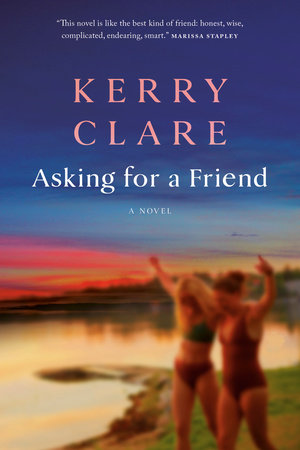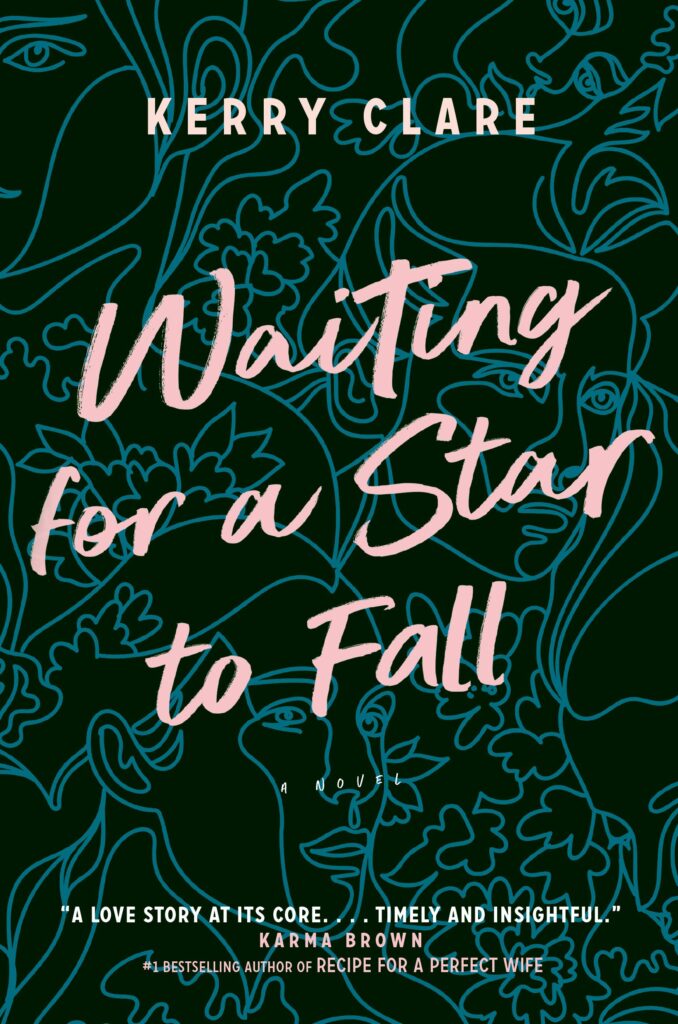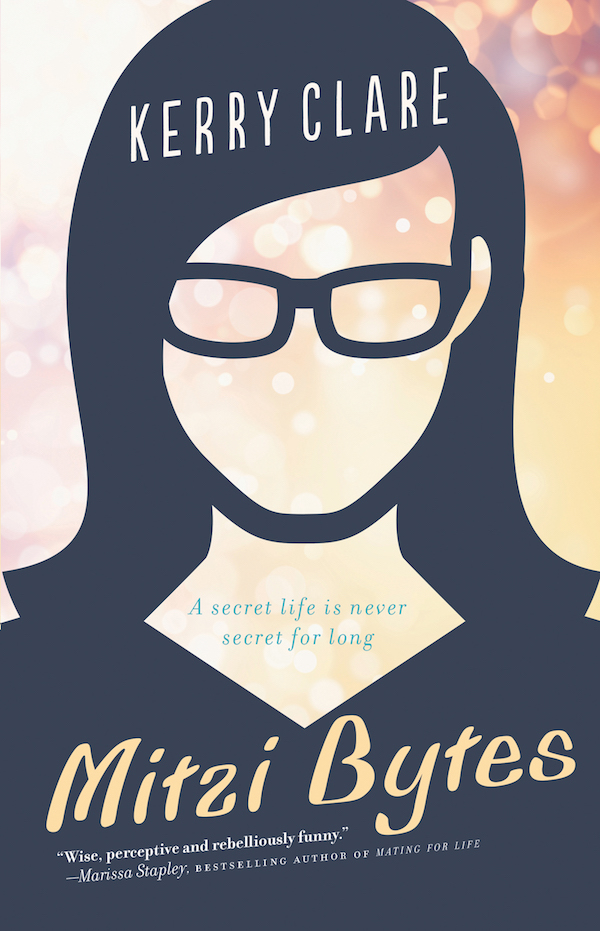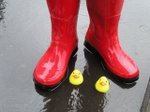February 24, 2020
Gleanings
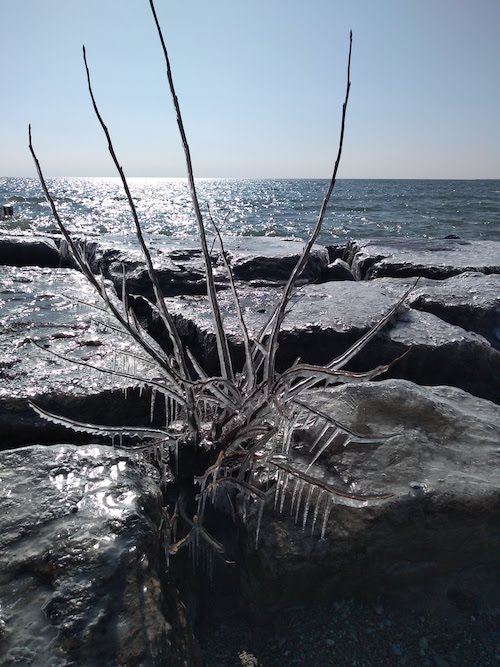
- I gave him the two pages in which the painting is mentioned in the novel and based on those two pages, he did the painting in three days. It’s not a portrait of a real person. I bought the painting from him. It’s hanging in our den. I never get tired of it.
- Can you even bear to think about putting a half-read chunkster back on the shelf and ‘resting’ it for a few weeks…
- But the other thing about Tyler’s novels is that while her characters may stray, they almost always come home again.
- Never in my wildest dreams did I think I’d use a rolling pin as often as I do.
- What even is real life?
- Dialogue tips from The Port Authority
- …in the end, life is just an ephemeral garden of memories, a paradise we create with missteps, a paradise created as we bring together the broken pieces…
- The Buxton Chronicles is Curtis’s masterwork. It transforms the Elgin settlement into a version of Hannibal, Missouri, where Mark Twain grew up: a setting of idyllic boyhoods, full of pranks and woodsy adventure, in which Curtis examines themes of slavery, race, and class from an unequivocally Black perspective.
- Why High-Achieving Women Pretend Their Lives Are in Shambles
- When I read that Marie Kondo now started an online store, I felt like I’d been had somehow and I haven’t done much de-cluttering since.
- It felt like one of those Escher paintings where you’re climbing stairs to nowhere that never end.
- And the level of homesickness Ginzburg was feeling for her large family comes through strongly as she evokes them all while maintaining a personal privacy.
- Just after we turned out our reading lamps, the coyotes started singing.
Do you like reading good things online and want to make sure you don’t miss a “Gleanings” post? Then sign up to receive “Gleanings” delivered to your inbox each week(ish). And if you’ve read something excellent that you think we ought to check out, share the link in a comment below.
February 21, 2020
Calm
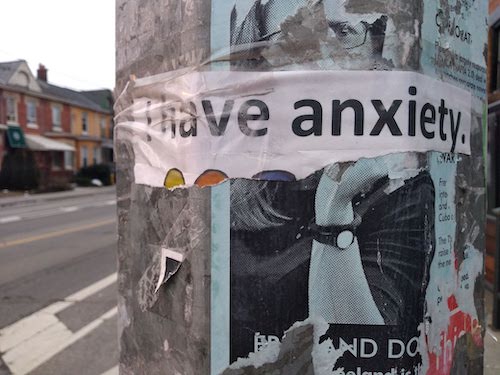
2016 was the year in which I spent a lot of time waking up and not recognizing the world I lived in anymore, which was certainly a privileged position to be in (or emerge from), but that didn’t make it fun. “If somebody’s not safe, then none of us are safe,” was a phrase I heard that stuck with me, as violence and tyranny in faraway places crept closer and closer, as we stumbled through 2017 and I started getting massacre fatigue. I kept thinking about Syria, and all those people who’d been living regular lives up until just a few years ago, and how what separated me from those people’s experiences was mostly nothing.
To be anxious at this moment in time is certainly not to have one’s feelings be unfounded, of course. And while it’s in my nature to compare right now to other difficult periods in history (in the 1960s, everyone supposed they’d all die in a nuclear war, for example, which is the thing I remind my daughter of when she wonders if she’ll have a future because of climate change), that is not the same as saying we don’t have to do anything about what’s going on. And I’ve become especially resistant to people insisting that everything is fine, and that, moreover “there are good people on both sides” in order to justify such a position. Anyone who starts in on The Militant Left, as white nerds in stupid khaki pants take up their tiki torches and parade through the streets of major cities. Certainly, everything is not okay, and the oceans are riddled with plastic and the forests are burning.
But it somehow got to the point where every time a plane flew over my house, I supposed we were all going to die (and guys, we live under a major flight path). I got emergency weather alerts on my phone, and would have heart palpitations. Every time there was a wind gust, I’d be thinking about cyclones, and patio furniture flying off condo balconies and that poor person in the west end who was killed by a flying STAPLES sign during a storm in September 2012. It all became more than a little overwhelming.
And then it stopped, with the end of November. Like that. I wish I could tell you how it happened, but I really don’t know. (This shift did correspond with positive results from one of my various annual cancer-screening medical appointments [#Thisis40], but surely that’s not the reason I’m not afraid of the sound of airplanes anymore?) And there have been a few times since where I’ve sensed the anxiety creeping back, which has itself made me anxious, because I don’t seem to have much control over this thing, but each time the anxiety over the anxiety has proved worse than the anxiety itself, which quickly retreated and was never as enveloping as it had seemed before.
But it’s not gone. It’s there, but at a remove. I can note it, acknowledge it, and choose not to indulge it, as I lie under my covers in bed at night and hear a howling wind outside. I can make a choice to hear the wind and stay calm instead, which did not seem to be an option before.
The night of January 3, I opened my laptop and checked Twitter (I don’t have Twitter on my phone, as a kind of self-preservation) and saw that #WorldWarThree was trending after the US’s targeted killing of an Iranian military official, and instead of scrolling and scrolling in a futile search for reassurance and understanding, I closed my laptop again. In contrast, when the Russian ambassador to Turkey was assassinated in December 2016, similarly leading to hysterical tweets about Franz Ferdinand, World War, and ominous phrases like, “Here we go…,” I couldn’t close my laptop for days. But this time I had enough to perspective to consider that all of us could probably benefit from calming right down.
Similarly a week after the targeted killing, when we received the devastating news that a passenger airplane had been shot down “by accident” outside of Tehran, killing everyone on board. It was news that hit particularly close to home, as 57 Canadians were on board and many more were also en-route to Toronto, and grief hung low just like a fug, but. “I am working at channelling calm as I head into today,” I posted on Instagram that morning. It seemed particularly important for my own mental health, but also on a broader level, because it had been escalating military attacks (the opposite of calm) that had led to the tragedy in the first place.
During the past couple of weeks, our country has been (I’m not going to say GRIPPED BY, because gripped isn’t a calm word, and I also don’t think it’s particularly accurate) following the protests set up along rail lines in solidarity with people fighting against the construction of a pipeline in the Wet’suwet’en First Nation in Northern British Columbia. These rail line protests have blocked the transport of goods and also passenger trains, and yes, its all very complicated, because the Wet’suwet’en people (consistent from what I understand of all groups of people ever) have divided opinions on what exactly should be done about the protests, not to mention the pipeline itself. I really do not have a comprehensive understanding of the matters at stake—though such a lack has not stopped other people from opining—but have appreciated the government response, which some might term as measured. Or calm. Even though Twitter partisans are raging that the Prime Minister doesn’t know anything about power, and the rail companies with record profits are following through with layoffs they were already planning but blaming the blockades so they don’t have to take the heat for their actions, and it’s reminiscent of the immediate aftermath of last month’s plane crash when the very same blowhards were calling on the Prime Minister to declare Revolutionary Guard in Iran a terrorist organization. It’s all just so incredibly stupid, because none of these people know what the answer is anymore than I do. None of it’s simple, and the only way toward an answer is work, which is what’s happening now all around us, and we need to be patient. And calm.
Calm is a superpower. This is a line from Ann Douglas’s latest book which is ostensibly about parenting, but which is really more about community, and connection, building a village, and learning to be better understand and support each other. And while Douglas is indeed speaking about parenting directly when she talks about calm being a superpower (and oh my gosh, is it ever), this advice is just applicable when it spills over into everything.
Perhaps it’s the closest thing we’ve got to an answer to anything right now.
February 20, 2020
A Dark House, and Other Stories, by Ian Colford
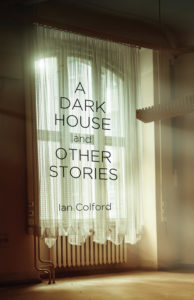
The old year clocked over on January 1, but I wasn’t finished with the books yet. A month ago I published a list at 49thShelf about 2019 books worth checking out before we got lost in a sea of 2020 new releases, and while I already suspected that it might be the least fluffy book list ever posted in the history of the internet, having read one more book from that list—Ian Colford’s A Dark House and Other Stories—I can now totally confirm it.
A Dark House… was terrific. And I’d been hearing rumours of as much; the book got a starred review in Quill & Quire. But one woman’s starred review can be another man’s DNF, so it always feels extra lucky when I like a book as much I’d been led to expect that I would.
A Dark House and Other Stories collects works Colford wrote between 15 and 25 years ago, as he explains in his acknowledgements, but nothing about these stories read like a writer who’s finding his way. The first story makes the reader feel immediately uncomfortable, about a man who has taken his son from his ex-wife. “He’s tall and gaunt and unsure what he’s doing is right, but he’s doing it anyway because what else can a man do when he’s been denied his son through a perversion of justice.” There’s a sense of inevitability here, and a real sense of empathy with somebody who has done wrong—and this pervades the whole collection. And truth be told, we’re living in a moment where a a lot of men are feeling like a perversion of justice has denied them something to which they’re entitled, and stories told from such a point of view tend to wear out my patience real fast…except that Colford writes from such a place of curiosity, grace and humanity that I kept on reading, and I am really glad I did.
The stories are gripping, plot-driven, have nothing slight about them, and decades are conveyed in just a few pages. In “The Comfort of Knowing,” a man decides to get the better of his wayward younger sister, but instead sews disaster. “The Dictator Considers His Regime” is a fascinating story that (I think) is set in mid-century Portugal, about authoritarian systems, freedom, personal responsibility, and the price of speaking truth to power. The main character in “McGowan on the Mount” reflects on a lifetime of family, loss, business, neighbourhood change, and finally can’t avoid taking one more chance on life and love. A college professor whose marriage breaks down projects his own experience onto a homely undergrad in “The Ugly Girl.” In “On the Beach,” a young girl whose mother is struggling is unnerved by her developing friendship with a troubled neighbour. In the title story, an inversion of “The Ugly Girl,” another professor projects her experience onto a student who reminds her of her ex, and reconsiders her life choices. And finally, in “The Music Lover,” a young girl struggles to keep the peace as her family falls apart.
Every story is rich and absorbing, small windows into wider worlds. With wide-ranging approaches to tone, theme, and characterization, what links these stories as a collection is simply that they’re just so good.
February 18, 2020
Gleanings
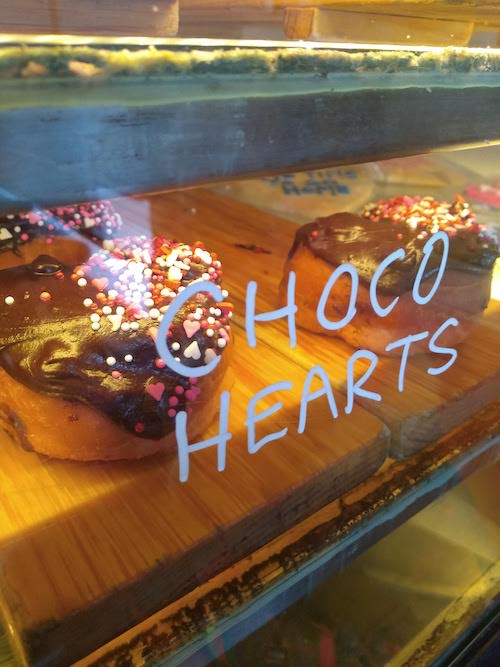
- I’m not at all against social media. But one wishes for more poetic investigation, more hospitality being offered in a conversation. We want to talk things through, to get to another side, but acknowledge the mess of things, and to still find some kind of meaning, however impermanent, in flux it might be.
- Discovering that, if it’s the right one, a romance novel is the best bookish friend imaginable–always there when you need it and sure to cheer you up–is the happiest result of my now decade-long romance reading adventure.
- If this font was a person, it would be the sort of friend who fits in wherever they go and who you trust with your secrets and who will never fail to tell you if you’ve got something stuck in your teeth.
- What I wanted to say in this essay is that I laugh about death because death is a lens through which I’ve seen the world for the past year and this way I laugh every day.
- Where is my corner in the room? In the world? There are so many sharp corners, at every turn.
- Why is protesting such an uncomfortable enterprise? It may be because a protest is a perfect storm of social awkwardness: It’s where the tidal waves of conformity and nonconformism smash into each other.
- Loving my discussions this week with friends about Valentine memories from their own childhood…
- You can learn a lot from attempting to photograph a can of sardines.
- The healing superpowers of learning new things
- But even the sight of my neighbour’s sheets, socks and undies bellowing in a Toronto breeze warms my heart.
- Sewing the chapbooks in sunlight, and this evening we’ll read from the Odyssey, that great poem about craft, textiles, cunning. And love.
Do you like reading good things online and want to make sure you don’t miss a “Gleanings” post? Then sign up to receive “Gleanings” delivered to your inbox each week(ish). And if you’ve read something excellent that you think we ought to check out, share the link in a comment below.
February 13, 2020
I Know What I’m Doing
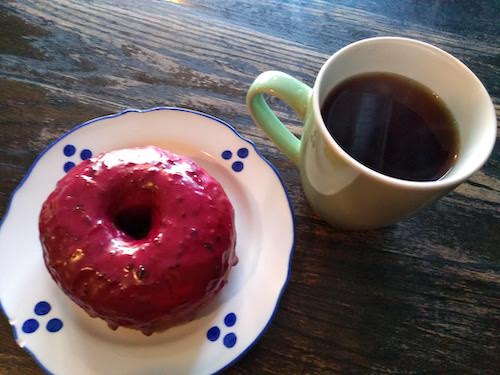
There are lots of memes and online posts where somebody writes about having no idea what they’re doing, but they’re doing it anyway, pushing through, persisting, and as someone who loves the idea of process, obviously I am pretty fond of this idea. “I don’t know what I’m doing but I’m doing it anyway,” could have been the tagline for this blog throughout its many evolutions over the last twenty (20!) years, and maybe the tagline for my whole life….but I wonder if too often we (me?) are focusing too much on the first half of the idea and obfuscating the second clause. It’s the doing it anyway that’s the point, instead of the undermining of our expertise. There are undoubtedly people who know exactly what they’re doing and who don’t do anything at all, and so at least you’re not in that boat, is what I’m saying. And that it’s only by “doing it anyway” that you’re ever going to figure out what you’re doing at all, and sometimes this is even possible. Not even in the “fake it ’til you make it” way (which is also a very good technique, so I’m not trying to undermine it) but for real. “I know exactly what I’m doing,” is a thought that really does occur to me from time-to-time (albeit never about sourdough), and it’s so empowering when it happens. To feel good and confident about a thing you have made, and not even be pretending—or is this just what it feels like to be 40?
February 12, 2020
The Skin We’re In, by Desmond Cole
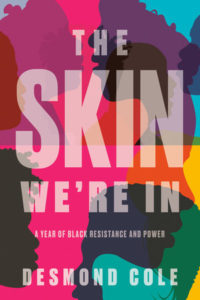
It makes sense that a writer who has insisted on blurring lines between journalism and activism would create a book that’s such a powerful blend of reporting and memoir, and it’s the extraordinary framing of his story that helps makes Desmond Cole’s The Skin We’re In a rich and enveloping read.
“A Year of Black Resistance and Power” is the book’s subtitle (except, YIKES, it almost wasn’t), and indeed, this is the story of 2017, which was two years after Cole’s Toronto Life cover story about his experiences with carding and the Toronto police force, which elevated his profile as a writer and an activist. Except that it’s not just the story of 2017, which is the book’s greatest strength, the way the single year frames the work, but Cole moves forward and backward in time to contextualize his stories, using experiences from his own life growing up Black in Canada, and also details from the historical record. In the book’s first section, he references an 18th century bylaw in Shelburne Nova Scotia “forbidding Negro dances and Negro Frolikcks in this town” in the story of Toronto artist John Samuels, whose gallery space was raided by the police and was physically attacked by them on the eve of the New Year 2017.
“White supremacy, which informs and fuels anti-Black racism, is an insatiable force White supremacy is never personal, never individual, never isolated. The historic problems I explore in this book are not a matter of some police being too rough or some government programs being too poorly funded, They have nothing to do with the political leaning of a particular government or the intentions of powerful people. We’re talking about a system of power that seeks to benefit white people above all others.”
You can’t make this stuff, I guess is what I mean. How a single year can be picked out of the air to demonstrate the ways the pervasiveness of anti-Black racism and white supremacy in Canada. In the school system—Cole gives examples of a six-year-old girl put into shackles by police, and the appalling behaviour (and even worse, refusal to accept responsibility for it) by a York Region school board trustee, and this is only February. In March, police officers across Canada rise up in support of an Ottawa police officer charged with fatally beating a man on his doorstep. In April, Cole leaves his column at the Toronto Star after being called out for his activism after demonstrating at a police board meeting, never mind that his white colleagues at the paper have been lauded for such things—and in this chapter, he connects police surveillance of Black and Indigenous people to a tradition of slavery, “suggesting that our very presence as free people on the street is suspicious and in need of investigation.”
In June 2017, Black Lives Matter Toronto blocks the Pride Parade in the city, and here Cole makes the connection between Black activists and the LGBTQ movement, especially pertaining to their relationships with police—and the way that Black people been left out from the story of gay rights, as symbolized by Blockarama, a celebration of Black queer culture since 1999, getting squeezed out of Pride events in favour of corporate sponsors. The Black Lives Matter protesters didn’t just “show up” to Pride, Cole shows, but instead they’ve always been there, and in 2017, they just insisted on finally taking up their space.
July is #Canada150, celebrating what Cole calls “this round number of colonial conquest.” He reaches back to 2011 to write about the advent of Idle No More, noting the parallels with Black Lives Matter, and explores the Indigenous resistance to Canada’s anniversary celebrations, including the tipi that was built on Parliament Hill (but not before RCMP officers had arrested demonstrators—are you seeing the theme?). Later that same month, Cole, who was born in Alberta and lived there until he was five, travels to Western Canada to learn more about police carding practices in the province, and learns that Indigenous women are disproportionately affected.
“My year had begun with news of a police attack on a young Black gallery owner,” writes Cole at the beginning of August. “I thought then about how attacks like this happen every day, that they are too common to be documented and investigated.” It was during summer of 2017 that media began reporting on Dafonte Miller who was brutally beaten with a pipe by an off-duty police officer and his brother in Whitby, Ontario. Miller sustained horrific injuries, and lost an eye, and for months, there was no investigation by the SIU, which is what’s called for when a police officer is involved in a death, injury or assault of a civilian. Cole would help bring the case to public attention, and also to the Toronto Police Services Board, where he’d be thrown out of a meeting and bring 100 protesters to another the following month. It would come out that the men accused of Miller’s assault were the sons of a veteran Toronto police officer who would be put under investigation himself for interfering with the investigation of his sons.
Not shockingly, police violence doesn’t end with the summer, and Cole writes about the way that racist police violence, to the majority of white Canadians, “is the cost of being ‘free'” And then later that September, he joins demonstrators to block one of Toronto’s busiest intersections to protest the deportation of of a wife and mother for overstaying her visa. “For as long as Canada has been a country, it has gone to great lengths to keep Black people out, and to deport thousands who arrive,” Cole writes. Slavery was legal in British North America until 1834, Cole reminds us, and he notes that the Underground Railroad ran both ways, and also that Black Loyalists who fled north at the Revolutionary War had their homes burned, were driven out of town in places in Nova Scotia.
“In October of 2017, the RCMP detained 1,755 people who had entered Quebec from New York State without permission from the Canadian government.” Cole makes a distinction between immigrants, refugees and asylum seekers in general and those who are Black, noting that “the mass arrival of Black people to Canada has historically been marked by the strictest regulation our government can design.” In the 1950s and 1960s, a demand for cheap labour brought Black Caribbean domestic workers to Canada, and racist rules would exclude them from more lucrative professions once they’d been established here. Later that month, Cole travels to North Preston, NS, to learn about racial profiling and racist stigma in that community, and the struggle for Black life in other Canadian places. (Though this bit of the book really surprised me, because I’d only heard of North Preston through Shauntay Grant’s picture book Up Home, which paints the community as such a vibrant and special place, and I love that that’s the only story I knew.)
November was when the debate finally came to a head over community policing in Toronto schools, a situation born out of rising school violence in the early 2000s, which Cole connects to a radical change (and subsequent decrease) in the school funding formula during the 1990s—which seems incredibly pertinent at a moment right now in 2020 when Ontario teachers are standing up again even more cuts to education for a system who hasn’t seen a proper investment in decades, and underlines the urgency of their fight. A cheaper solution than investment, however, was putting unarmed police officers in schools, which made schools unsafe and welcome to many Black students. In 2009, a student was arrested in his school hallway for not identifying himself to an officer. It would take years of protest, but finally in November 2017, the SRO program in the Toronto District School Board was finally abolished. (It remains in the Catholic Board).
“…so much of the public conversation surrounding our work focuses on what we call ourselves and on what right we have to speak and act as we do. People who have time for these questions are dodging much more important ones: What is the purpose of activism? What are we all responsible for in the world, whether we call ourselves activists or not?”
Cole writes about an invitation to be part of the National Black Canadians Summit, which turns out to be very much an establishment operation and committed to the status quo, which Cole is having none of. While in the company of Immigration Minister Ahmed Hussen, Cole speaks out about the risk of deportation for Abdoul Abdi, a 23 year old refugee from Somalia serving a prison term. Abdi had come under the wardship of the state at age 7, who would have been the only entity with the authority to apply for his citizenship, which never happened. That he should be deported years later to a dangerous place he barely knows (and where known members of racist skinhead organizations had served in the Canadian military two decades before, when a group of soldiers had tortured a teenage boy to death—facts that are not so far outside the frame) seems obviously immoral, wrong and dangerous. Cole had learned about Abdi from his friend, Halifax writer (and former Poet Laureate!) El Jones, who has worked with incarcerated people in Nova Scotia, and unsurprisingly they do not receive a helpful response from the Minister, but with help from other activists (“They say luck happens when opportunity meets preparation.”) continue the fight to keep Abdi in Canada, bringing the issue right to the Prime Minister.
2017 was not special. This is the point of the book. That anti-Black racism is so entrenched in Canadian society that a single year contains so many stories of its insidious threads, but it was also a turning point as Black activists met with successes and had their messages amplified. Or we might hope so—though Cole doesn’t tie the story up on a bow, or end on a note of optimism. The fight goes on. Another month, another year.
February 10, 2020
18 Ways That Having a Sourdough Starter is JUST LIKE Having a Baby

- Somebody just handed me this living thing, and its existence does not entirely make sense to me.
- Care and feeding of this living thing is a little bit overwhelming and I spend lots of time texting questions to my friend who has had a sourdough starter for six weeks longer than I have and therefore knows EVERYTHING.
- I am worried I am not to be trusted with this living thing, and keeping it alive is causing me anxiety.
- I spend evenings googling the things that confuse me in particular about the behaviour of my sourdough starter, and perusing sourdough forums to find experiences I can relate to.
- I discover sourdough forums, where opinions are strongly held and factions end up fighting amongst themselves.
- My sourdough starter is a bit weird, and I have trouble mapping my experience onto the ones that everyone else is writing about.
- There are a lot of different ideas and philosophies about care and feeding of a sourdough starter, and how a sourdough starter (and in particular a loaf) eventually turns out seems to be completely unrelated to any of these ideas.
- Every loaf you make will be completely different from all the others.
- People have their sourdough starter ideas, and get a bit tetchy when you decide to raise yours differently.
- They’re worried you’re not feeding yours enough, or that you’re feeding it too much.
- I can’t stop sniffing it.
- Heated online debates can be found between those who discard their starter every time they feed and those who don’t.
- I start to think my sourdough starter is perhaps a little exceptional.
- My sourdough starter keeps me up at night—or at least, I am unable to go to bed until I’ve gone downstairs to check on it just one more time.
- I have to plan my days around it, not only the feedings, but baking a loaf of bread is a 24 hour process.
- I start to realize that it doesn’t actually matter what I do with my sourdough starter, or rather than I can follow my instincts and just do what feels right.
- I learn that I can google anything about my sourdough starter, and find an article online to justify what I believe to be true not based on any scientific information whatsoever, but instead my gut feelings about sourdough starters.
- With my sourdough starter, I can bake everything I baked without it, but just with more labour and less convenience. And somehow, mysteriously, sometimes it even seems worth the trouble.
February 10, 2020
Gleanings

This is an extra-large serving of good things to read online. This is not my fault. It’s just that people have been creating so much goodness.
- the story of rebecca of sunnybrook farm begins with bingo
- I was able to be more expressive, somehow, on the page. Freer, funnier (or so I thought), both deeper and more frivolous than with anyone else.
- The future is no excuse. The present is no excuse. You cannot abdicate from loving the world. You cannot abdicate from loving your neighbour. Please sing your songs and paint your pictures and write your poems. Share them all. Have fun. We need art more than ever.
- joyspotting
- Parenting, especially single parenting, has taught me to ruthlessly set my sights on possibilities of flourishing
- I finally found a copy, used, of A Dictionary of Angels, so I can say my own personal angel library is in a happy place.
- Written so effectively that his horror becomes the reader’s, is the exact reason why I do not like to read books about diseases. But what do you do when your book club chooses the very title you’ve tried to avoid?
- Everything, and I mean every single element, can be manipulated, cropped, changed, added to, subtracted from, embellished—how are we to tell where reality begins or ends?
- Bye kids, come back when you’re hungry,” our parents said as we walked out the door for our adventures. “Don’t fall off a cliff!” Ah, what unimaginable liberty.
- The Terrifying Joy of Moving Beyond the Meadow of Lost Time
- That’s why I stayed huddled by my lantern in our dark and rapidly chilling living room until I knew how everything turned out. I call that an endorsement!
- I’ve been paying a little closer attention to the barren branches, grasses and dried seed heads in people’s gardens this winter.
- Baking a delicious cake for people you love is not hard; it’s very doable and lovely and even feels good. Baking a cake to feed an entire wedding reception is a whole other thing.
- car trip with kids telling stories
- What’s your tree history?
- dee nickerson’s lovely world
- The in-house vote was strongly in favour of Jonathan, probably because Brenda is not easy to deal with, frightens some people and is so relentless in her pursuit of her agenda about women
- The main thing to remember is to slice and freeze large loaves and take out only enough bread that you’ll use for a day or two.
- Most of us make the mistake of believing we have all the time in the world to right wrongs, speak up for our friends; in short demonstrate our love for them. Bottom line: The time has come.
Do you like reading good things online and want to make sure you don’t miss a “Gleanings” post? Then sign up to receive “Gleanings” delivered to your inbox each week(ish). And if you’ve read something excellent that you think we ought to check out, share the link in a comment below.
February 7, 2020
Why We Stand With Teachers

What is most abhorrent to me about how our provincial government is currently trying to spin negotiations with teachers unions in Ontario is that educators are on the front line of this government’s reckless cuts.
And cuts to education are just the tip of the iceberg in terms of the challenges our teachers are meeting every day. Maybe the Minister of Education knows this and he just doesn’t care? Or else he has absolutely no idea. (As a person with no background in public education, it’s possible.)
Reductions to minimum wage/ opioid crisis/ cuts to social services/ autism support/ healthcare/ housing/ mental health problems/ domestic violence/ poverty—you name it. Combatting these problems are what teachers do, in addition to teaching (which teachers do well).
One morning last week, I spent fifteen minutes in the school office waiting for a meeting, and I saw it myself, educators rising to the occasion and meeting these challenges with ingenuity and grace.
I wrote a bit about this last year. I challenge people with strong opinions about teachers’ working conditions who have not set foot inside a school since 1976 to maybe update their info.
The one thing that Minister of Education has done well is put his face on EVERYTHING, so we forget that he is only one part of this terrible, incompetent government whose recklessness is going to cost this province for YEARS.
These shambles are not just Stephen Lecce’s. They belong to Doug Ford, and all the MPPs who have paved the way forward for this government. (STILL smarting over what they did to our city council mid election. I will never get over that, and neither should you.)
Our teachers, our public schools: THESE are our social safety net. It’s still full of holes, but it’s the best one we got.
This is why I stand with educators, and Lecce etc. need to shut up and start listening, and maybe learn a thing or two, even if what he learns fails to conform with his ideology (because REALITY).
(I wrote this on Twitter in December, but wanted to post somewhere where it wouldn’t get lost.)
February 6, 2020
Don’t Look Down, by Hilary Davidson
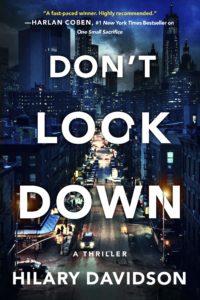
Oh, give me a great novel in February, a book to get lost in, a book that has me spending the whole day anticipating the point when I can get back to it and find out what’s going to happen next, because I’ve got absolutely no idea. New York-based Canadian crime writer Hilary Davidson’s latest novel, Don’t Look Down, was that book for me this week, such an absolute pleasure.
It begins with Jo Greaver, the young CEO of a successful cosmetics company, who’s on her way to a dilapidated apartment building for a meeting with whomever has been blackmailing her with photos and videos from her troubled past. She’s got a bagful of cash and she’s also got a gun, and then the encounter turns violent, she’s got no choice but to use it, escaping down the fire escape to save her life.
When NYPD Detective Sheryn Sterling arrives on the case, it all looks pretty simple. There’s a dead guy and he’s got Jo Greaver’s card in his pocket. When Greaver finally surrenders to authorities, all the pieces seem to line up, and she’s going to be charged with the murder of Andray Baxter, the man whose body was found in the apartment. But of course, nothing is simple and Sheryn Sterling knows that. She’s also still thinking about her teenage son who had the day before been arrested at a protest against the deportation of illegal immigrants. The thirst for her justice that drives her, Sheryn knows, could get her son into all kinds of trouble, and as a Black policewoman and as the mother of a Black boy, the stakes for her are very complicated.
Don’t Look Down is the kind of book you can point to when people cry CENSORSHIP at scrutiny of how stories about characters who are Black or people of colour are being told (and by whom). Because the fact is not that a white author can’t do it, but instead that she has to do it so well, and I think that Davidson really does in this novel, which engages smartly and thoughtfully with race and racism. White is not the default for Davidson’s characters, which a reader would expect from any halfway decent novel set in New York City—Sterling’s partner is Latinx, a key witness is Thai, Jo Greaver’s vice-president is Chinese-American, her lawyer has a Japanese surname. (This is just a handful of examples.) These choices are thoughtful and interesting, and a reflection of the world as it is.
The story is twisty and absorbing, and I had no idea how it was all going to turn out. Deftly plotted, it did not even begin to get a little bit silly and over-the-top until close to the end, which is altogether forgivable. The writing was great, dialogue fun and snappy, and the pacing never missed a beat. Don’t Look Down was delightful, and everything I want in a read.
